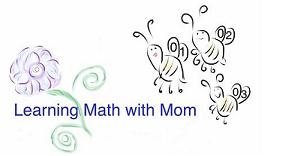After going to the grocery store pointing out shapes to my child, going outdoors to connect the learning, and shape sorting, I wanted to see if he could really pick out shapes from a pile. I was able to find plastic buttons of different shapes at a local dollar store. It was time to think of how to use them to compliment the learning.
Between 13 to 18 months old, I decided to use the shape flash cards and the pile of buttons as a lesson. The only shape cards I used for this lesson were the circle, ellipse, square, triangle, heart, star, and hexagon flash cards. Pulling out a circle card, I would say that “this is a circle, where is the circle?” as I was circling my finger around the pile of shape buttons. For him, picking up the circle was not difficult because he associated circles with baseballs, basketballs, and other bouncing balls. For his first birthday, his piñata was a huge baseball filled with an assortment of bouncing balls as prizes. That was his thing and so he of course knew how to identify a shape of a circle. However, when showing the flashcard of an oval it was sometimes hard for him to choose the right button because the buttons of both the oval and circle looked very similar.
Before I share any further about the lesson, I want to make sure this is very clear about how to give feedback to your child. When my son chose the circle button instead of the oval, I did not tell him no or that his choice was wrong. Make sure the tone of your voice also does not sound like a no or that the choice was wrong either. Make sure your face is also not telling your child no or that your child was wrong. The idea is for you and your child to have a positive learning experience, not a negative one. When your child chooses the wrong shape, identify the shape he/she has and then ask for the shape on the flash card again.
My son chose the circle button and I told him that yes that is a circle, and to show me the oval. If that did not work, I held the circle up to the flash card to show the oval is wider than the circle. I would tell him the oval is a circle that has been stretched out. I would then take the circle button and place that on top of the oval button to show the difference. This only had to be done a few times until he chose the oval correctly.
Here are ideas to think about when introducing a circle, an oval, and now thinking about the ellipse. At this age, I used the words oval and ellipse interchangeably. The shape card and the corresponding button are ellipses. What is an example of an oval? An egg is an oval. Should I have debated about whether or not I should use two different words for the same shape? The answer is no. He will learn the difference between an oval and ellipse soon. I was and currently okay with the idea of my 13 month old child calling it an oval. His world of geometry was not going to fall to pieces because he was just 13 months old at the time. At about 3 years of age, he learned the difference between an oval and an ellipse and is still a full functioning kid!
If you are taken back for a bit and did not know that there is a difference between an oval and an ellipse, you are not alone. No one is going to tell anybody else that you didn’t know. It’s okay, you will be fine too. For more information about the difference between an oval and ellipse, go to http://wiki.answers.com/Q/What_is_the_difference_between_an_ellipse_and_an_oval&altQ=Oval_and_ellipse_shapes
Continuing on to the other shapes, the same process was done. I showed my son the square card and asked him where the square button was. I showed him the heart card and asked him where the heart button was. After awhile, we used the same lesson for sorting. He was able to put all the circles in one pile, all the squares in another pile, all the hearts in a pile, and so on. He was between 18 months to 2 years old sorting the shapes.
Where does this fit into the Schedule of Activities for 0-18 months?
Schedule of Activities for the Week
(0- 18 months)
| Monday | Tuesday | Wednesday | Thursday | Friday | Saturday and Sunday |
| Music | Reading | Numbers (counting) | Shapes | Art | Go and see it outside and explore |
| ABCs | Colors | Reading | Reading | Textures |
Schedule of Activities for the Week
(18 months to 3 years of age)
If you want to have shape cards that are printable and ready to use, go to the following links:
2 dimensional shape flash cards in English
http://www.learningmathwithmom.com/sites/default/files/2dimensionalshapeflashcardswithellipse.pdf
2 dimensional shape flash cards in Spanish
http://www.learningmathwithmom.com/sites/default/files/2dimensionalshapeflashcardsinspanish.pdf
Something to think about:
You may find that your child can do this at 6 months or in 3 years. There is no race to see whose baby can do this at an earlier stage. The point is to do this with purpose. Learning about shapes needs to be fun, especially when working with a baby or older child. Remember to take your time, if this doesn’t work and seems to be more frustrating, put it to the side. This is not the time to force any topics. In about a week or even a month, try it again. It eventually will work out.



